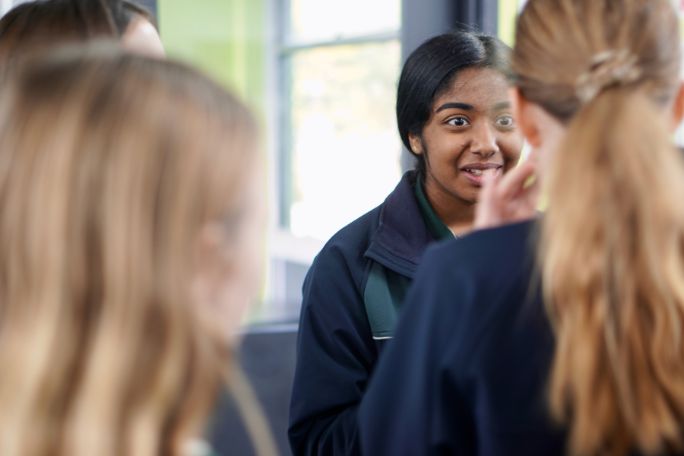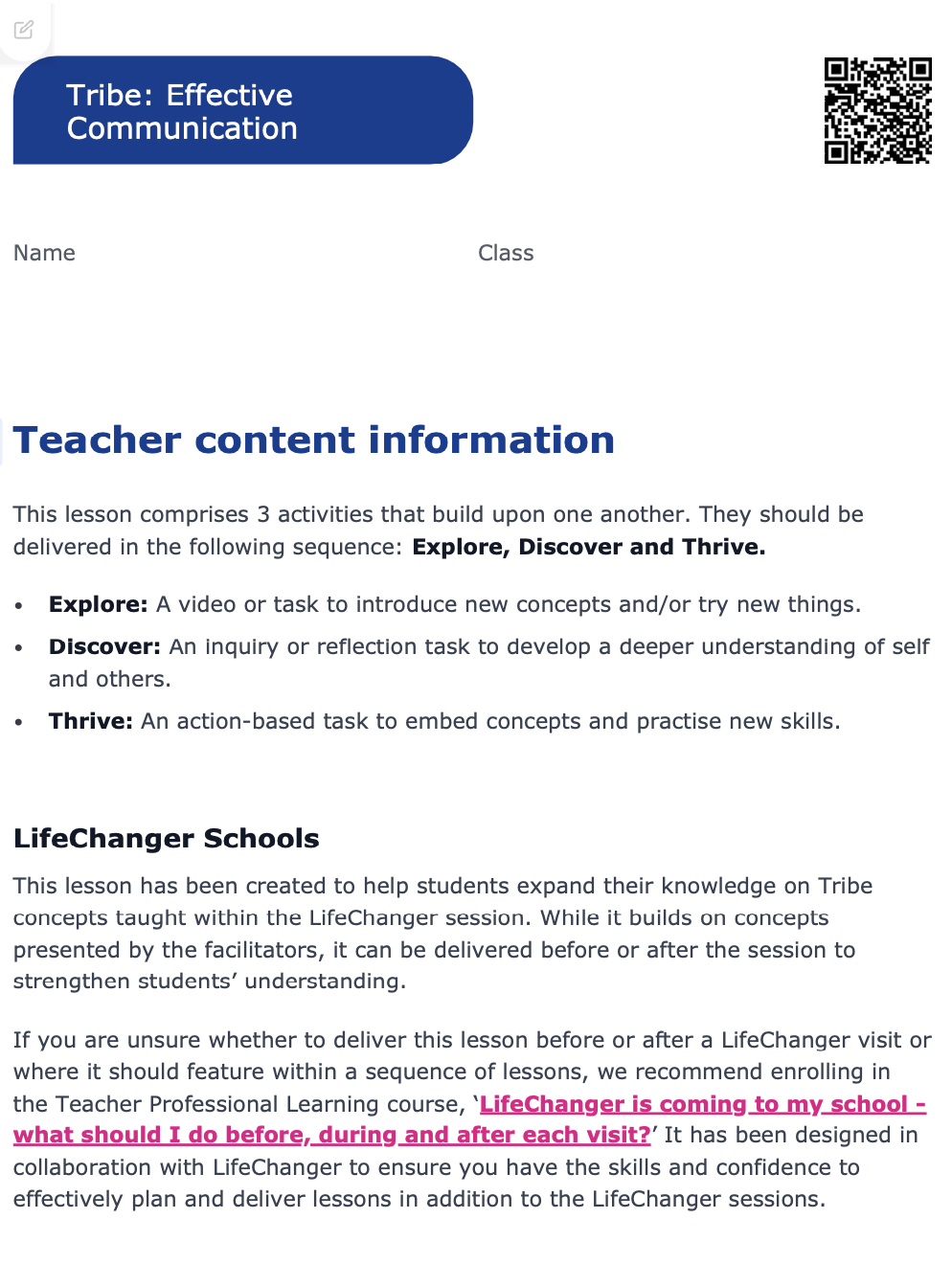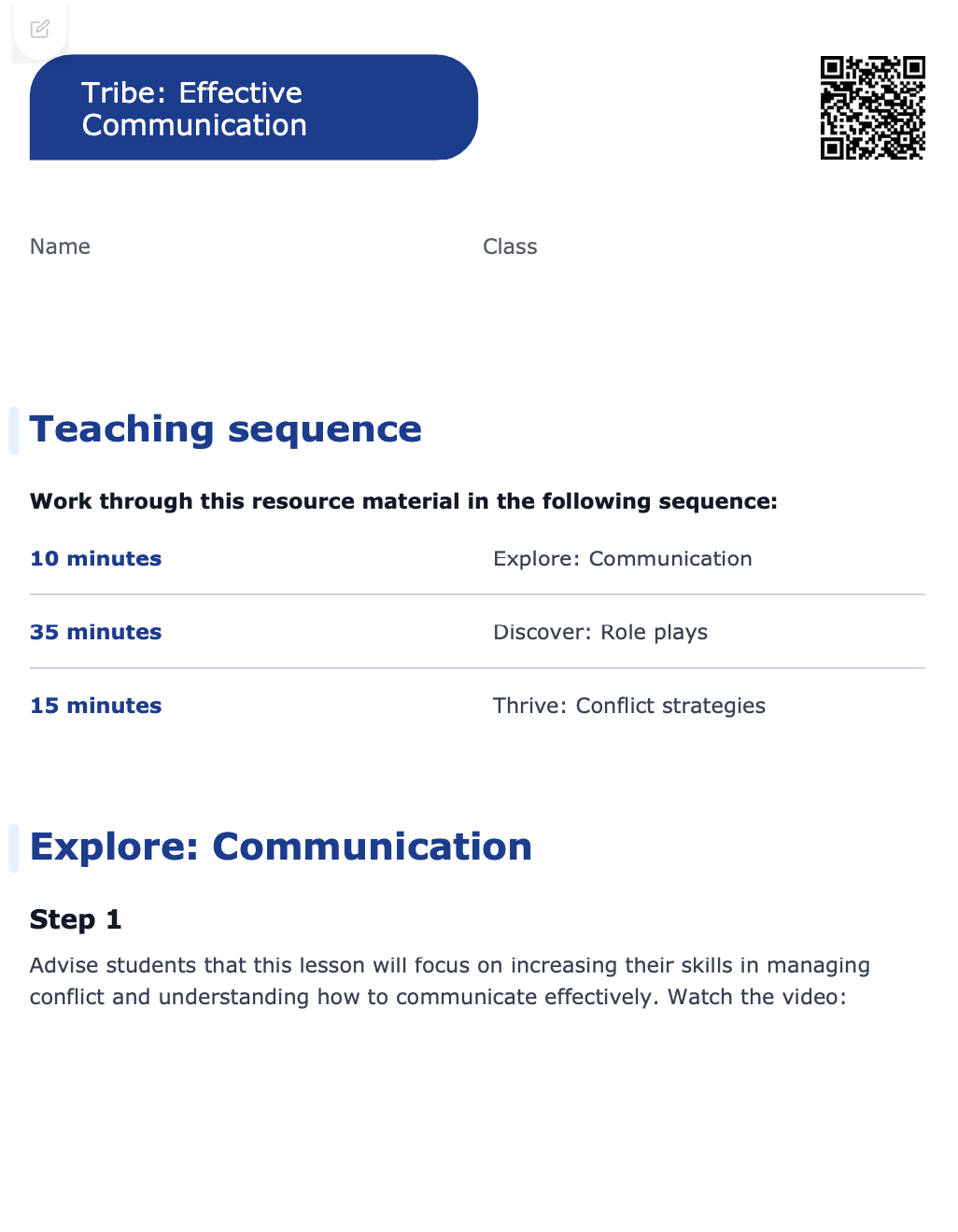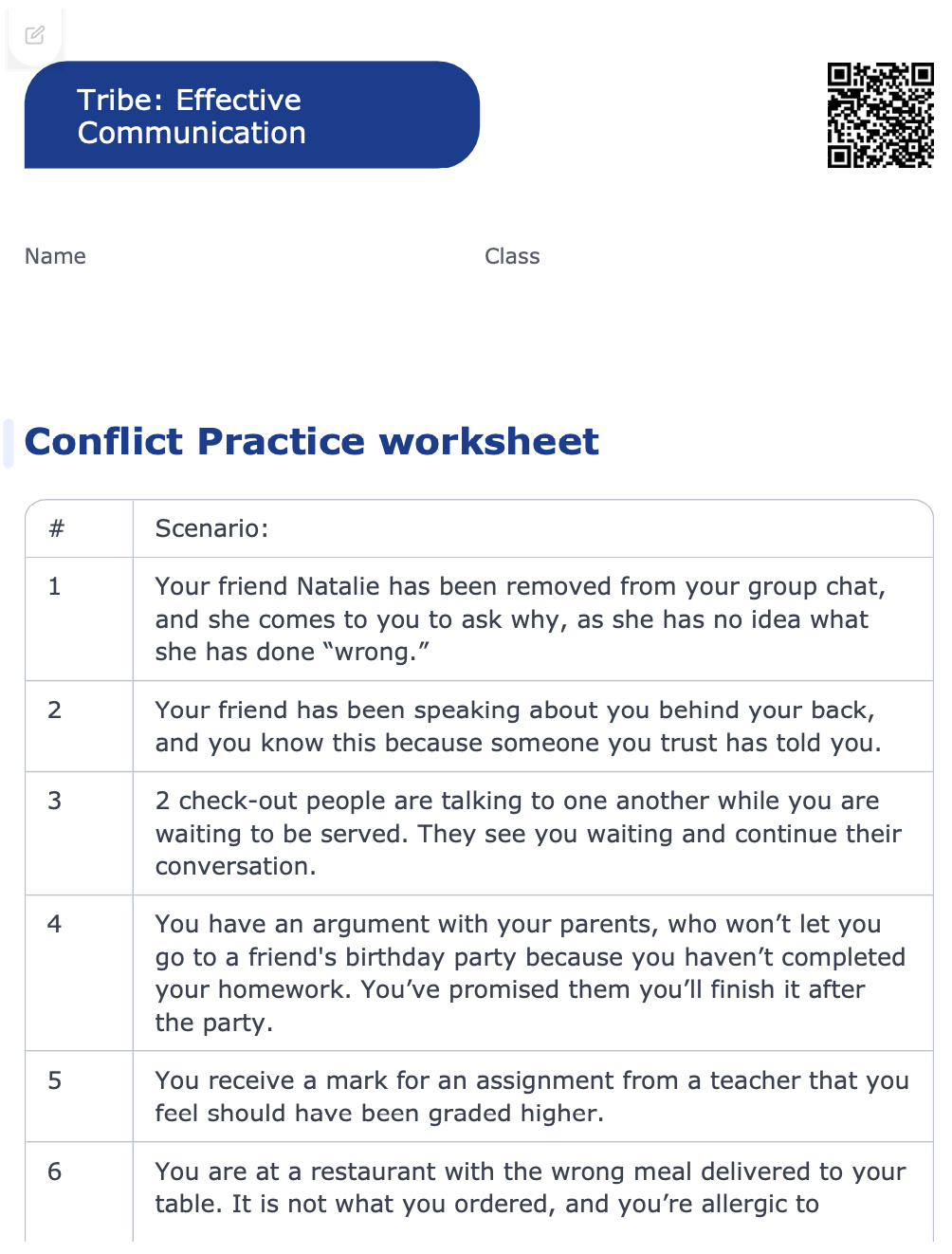Lesson summary
Students explore different communication styles and evaluate the effectiveness of passive, aggressive and assertive ways of responding to conflict. They develop strategies to manage conflict through role-playing scenarios and practising assertive communication.
Learning intentions:
Students will...
- explore different communication styles and practise assertive forms of communication to manage conflict.
Success criteria:
Students can...
- summarise the importance of effective communication and identify factors that impact communication styles
- perform role plays of common conflicts, demonstrating effective use of assertive communication
- design a conflict management strategy based on their understanding of effective communication.
Lesson guides and printables
Curriculum links
Select your curriculum from the options below.
Lesson details
Skills
- Communication
- Collaboration
- Problem-solving
- Prototyping
- Reflection
- Creativity
- Critical thinking
- Social skills
Curriculum Mapping
Health and Physical Education – Years 7 and 8 – Personal, social and community health – Interaction with others:
- Examine the roles of respect, empathy, power and coercion in developing respectful relationships (AC9HP8P04).
General Capabilities – Personal and Social Capability – Years 7 and 8 – Social management:
- Select and apply conflict prevention and resolution strategies in a range of contexts, based on an evaluation of suitability and effectiveness.
Syllabus outcome: (PD4-3)
UN Sustainable Development Goals
Target 4.7: By 2030, ensure that all learners acquire the knowledge and skills needed to promote sustainable development, including, among others, through education for sustainable development and sustainable lifestyles, human rights, gender equality, promotion of a culture of peace and non-violence, global citizenship and appreciation of cultural diversity and of culture’s contribution to sustainable development.
Resources Required
- How Miscommunication Happens video
- Communication Reflection worksheet
- Conflict Practice worksheet
- Digital devices (ideally 1 per student)
Additional Info
This lesson has been created in collaboration with LifeChanger Foundation to support teachers to deliver high-quality Health and Physical Education, as well as Social and Emotional Learning experiences.

LifeChanger’s facilitated programs and workshops aim to empower young people (Year 5-12) to live thriving, resilient lives. For more information, visit lifechanger.org.au.





Welcome back!
Don't have an account yet?
Log in with:
Create your free Cool.org account.
Many of our resources are free, with an option to upgrade to Cool+ for premium content.
Already have an account?
Sign up with:
By signing up you accept Cool.org's Terms and Conditions(Opens in new tab) and Privacy Policy(Opens in new tab).